Electronics News
Archive : 28 October 2014 год
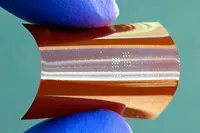 Materials such as graphene and molybdenum sulphide are exciting scientists with their potential to revolutionise transistors and circuits.
Materials such as graphene and molybdenum sulphide are exciting scientists with their potential to revolutionise transistors and circuits.
One of the problems with graphene is the lack of a band gap. However, MoS2 has a band gap that enables it to be used to create atomically thin transistors with high on-off ratios and high voltage gain.
A team of researchers at UCLA's California NanoSystems Institute has fabricated field effect transistors made from MoS2 and says they show the best performance to date in such a transistor.
Transistor performance is judged such factors as cut off and maximum frequencies. The UCLA transistors are said to exhibit cut off and maximum oscillation frequencies 40 to 50 times better than the frequencies for existing MoS2 transistors.
The scientists found that electronic devices such as logic inverters or RF amplifiers can be formed by integrating multiple MoS2 transistors on quartz or flexible plastic substrates with voltage gain in the gigahertz regime. The transistors they produced had a cut-off frequency of up to 42GHz and a maximum oscillation frequency of up to 50GHz.
"Besides the significant increases in intrinsic performance of the transistors, the layered semiconductor MoS2 represents a highly flexible atomically thin membrane," said Xiangfeng Duan, an associate professor of chemistry and biochemistry at UCLA. "And it can be used to make flexible or stretchable circuitry that could be of great importance for wearable electronics of all kinds."
Author
Graham Pitcher
Source: www.newelectronics.co.uk
 That move was made in 1998, with the formation of Cambridge Silicon Radio, which then floated on the London Stock Exchange in 2004, with a big pay out for some of its founders.
That move was made in 1998, with the formation of Cambridge Silicon Radio, which then floated on the London Stock Exchange in 2004, with a big pay out for some of its founders.
Amongst the technical challenges for the industry in the 1990s was not only offering Bluetooth functionality on a single chip, but also enabling that functionality on CMOS, rather than an exotic process technology. These challenges were solved by CSR, as it became known.
Being in the market early meant CSR was able to develop and exploit a number of niches. By 2005, it had already launched the fifth generation of its BlueCore device. But while CSR earned a good living in the early days of Bluetooth, commoditisation began to see it come under threat. It therefore started on an acquisition trail to diversify its business.
Its first acquisition, for a modest $17million, was Clarity Technologies, a clear voice capture specialist. This was followed in short order by acquisition of GPS specialist Nordnav, 3G company Ubinetics and positioning company Cambridge Positioning Systems. In 2009, it bought GPS chip specialist SiRF for $136m.
But the jaw dropper happened in 2011 with the merger with Zoran – a move which was designed to create a 'global leader' in wireless connectivity, imaging, video, location aware and audio products. Despite paying close to $680m for the multimedia chip developer and maintaining the chairman, chief executive and chief financial officer positions, the deal was billed as having the potential to double its revenues.
Then, in 2012, Samsung bought CSR's mobile technology business in a deal worth $310m. The deal gave Samsung full access to CSR's mobile connectivity and location technology, as well as relevant patents and more than 300 CSR employees.
All of a sudden, CSR was a target. The first approach came from Microchip, which made an undisclosed offer for the company, rejected as being too small.
But a story in the Financial Times alerted the world to the fact that CSR was in talks with another unnamed company, with a deal 'weeks away' from a conclusion. Was that company Qualcomm and, if so, what was the hook?
CSR has a number of technologies which could prove attractive to Qualcomm, but it may well be that CSRmesh is the big attraction. The recently launched technology – winner of New Electronic Product of the Year at the British Engineering Excellence Awards – is being seen as a potential 'ZigBee killer'.
CSRmesh enables Bluetooth low energy devices to not only receive and act upon messages, but also to repeat those messages to surrounding devices. In this way, Bluetooth Smart gets extended range and can be turned into a mesh network for the Internet of Things. Or, as Mollenkamp said, the Internet of Everything.
Author
Graham Pitcher
Source: www.newelectronics.co.uk
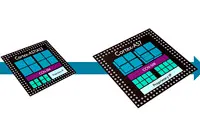 ARM has extended its cache coherent network offering with the addition of the CCN-502 and 512. Both interconnects have been developed in response to increased numbers of connected devices and a consequent increase in the amount of data flowing across networks.
ARM has extended its cache coherent network offering with the addition of the CCN-502 and 512. Both interconnects have been developed in response to increased numbers of connected devices and a consequent increase in the amount of data flowing across networks.
Ian Smythe, director of marketing for the company's CPU Group, noted: "We're seeing a lot of infrastructure changes, including content and latency. Network operators are having to answer such questions as 'how can users access content quickly?'. Different problems are being encountered at different points in the network."
The solution is said by ARM to be a single scalable architecture that ranges from high efficiency at one end of the spectrum to high performance at the other.
The CCN-502 option has been optimised for silicon area and, according to Andy Nightingale, VP of System IP marketing, has a footprint 70% smaller than the CCN-504, whilst supporting up to four CPU clusters, or 16 cores. "The CCN-512 offers maximum compute density," he added, "supporting up to 12 clusters, or 48 cores."
Author
Graham Pitcher
Source: www.newelectronics.co.uk
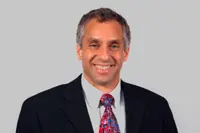 Cadence Design Systems has announced an automotive functional safety verification solution, which is said to reduce by 50% the effort required by automotive designers to prepare for ISO26262 compliance.
Cadence Design Systems has announced an automotive functional safety verification solution, which is said to reduce by 50% the effort required by automotive designers to prepare for ISO26262 compliance.
The approach, an expansion to its Incisive functional verification platform, offers fault injection and safety verification technologies to help automotive engineers address the traceability, safety verification and tool confidence level requirements of ISO26262.
Adam Sherer, director of product marketing for Cadence's verification group, said these processes have, until now, been manual. "We're offering automotive designers what EDA has been bringing for more than 25 years: automation."
The Cadence Incisive functional safety solution reduces the compliance effort by automating the process of fault injection and result analysis for IP, SoC and system designs. It includes the Incisive Functional Safety Simulator and the Functional Safety Analysis capability in Incisive vManager.
Author
Graham Pitcher
Source: www.newelectronics.co.uk
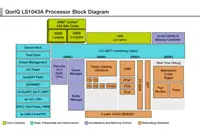 Freescale has launched the QorIQ LS1043A comms processor, said by the company to be the most power efficient 64bit ARM based device.
Freescale has launched the QorIQ LS1043A comms processor, said by the company to be the most power efficient 64bit ARM based device.
The device features four Cortex-A53 cores, each running at 1.5GHz. This is said to result in a performance of 16,000CoreMarks, with a power consumption of 6W.
Senior product marketing manager Eric Dudley said the device had been developed to cope with more network traffic. "Data from the IoT and from 802.11ac means it's becoming a software centric world. This device supports wired and wireless applications and offers secure high speed communications; connecting to the cloud means it has to be secure."
The computing performance of the LS1043A is said to be equivalent to that offered by Freescale's PowerPC based parts.
Author
Graham Pitcher
Source: www.newelectronics.co.uk
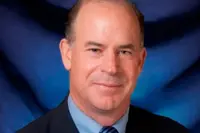 Digi-Key continues to be encouraged by the growth in its turnover and customer numbers in Europe and, in particular, in the UK.
Digi-Key continues to be encouraged by the growth in its turnover and customer numbers in Europe and, in particular, in the UK.
Chris Beeson, executive vice president of sales and supply development, said it was continuing the transformation from what he called being 'Thief River Falls centric' to having local conversations with sales and engineering professionals.
"Good things are happening," he claimed. "We've grown sales by more than 25% in the UK and are on the right path. But we continue to ask 'what more can we do?'.
Talking to the growth in customer numbers, Beeson claimed 90% of the market is underserved or not served at all. "Engagement is key," he said. "There's makers and students; all of whom want to do their own thing. They are a community new to the industry and have been hard to support because the model wasn't there."
Digi-Key is also looking at such issues as backroom support, IT, logistics and supply chain management. "We're also engaging with suppliers, because there's a lot of volatility in technology. We look to have deep inventories; that's OK if a product will be viable for 10 years, but what if its lifetime is only six months?"
Author
Graham Pitcher
Source: www.newelectronics.co.uk

